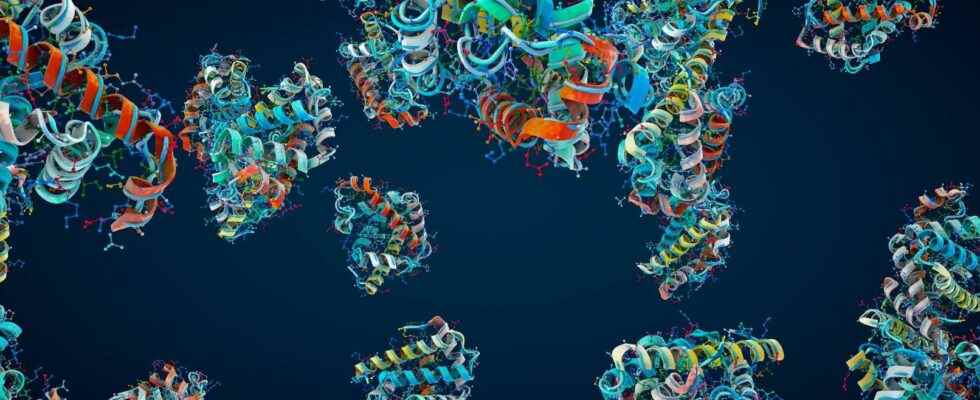You will also be interested
[EN VIDÉO] Barbara McClintock, pioneer in genetics Pioneer of genetics, the American Barbara McClintock multiplied the discoveries between the end of the 1920s and the 1950s: the role of chromosomes in heredity, “crossing-over”, jumping genes, gene regulation, epigenetics… Ahead of their time, his work was rejected… then all confirmed. Rewarded in extremis by a Nobel in 1983, she was fully recognized during her lifetime as one of the greatest biologists. But so late…
The structure of more than 200 million proteins, also from plants, animals, humans or bacteria, is now available to scientists around the world with a simple click. This revolution is possible thanks to the project AlphaFoldcarried by DeepMind, a company expert in Artificial intelligence owned by Googleand EMB-EMIthe European Institute of Bioinformatics.
Launched in July 2021, the database of AlphaFold already contained the three-dimensional structure of 350,000 proteins, including the entire human proteome. In less than a year and with regular additions, it now contains more than 200 million proteins from one millionspecies different. Almost all proteins now have a three-dimensional structure, predicted by Artificial Intelligence.
A new era of biology
” In summary, you can consider that it covers the whole of theuniverse proteins. We are at the beginning of a new era of digital biology said Demis Hassabis, CEO of DeepMind. AlphaFold is a valuable tool for scientists since, since its launch, it has been used in more than 1,000 scientific publications covering such varied fields that research on microplasticsParkinson’s disease, the biology of bees or the formation of glaciers.
The predictions made by the AI are very precise: 35% of the structures in the database are considered “very precise”, comparable to what scientists could obtain by carrying out long manipulations of crystallography at X ray or electron microscopy. These 23 terrabytes of data open up an almost infinite field of scientific research.
Interested in what you just read?
